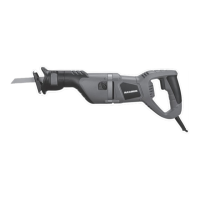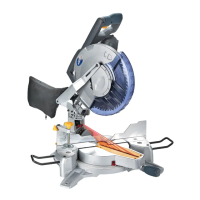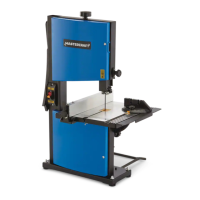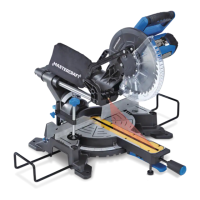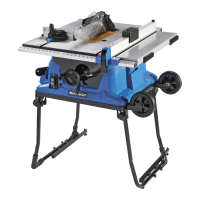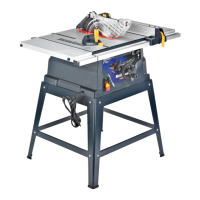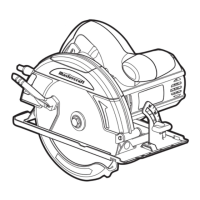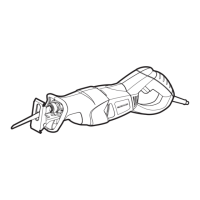CHANGING COLLET INSERT
The cutting bits for this tool are locked into place with a
collet nut (1) and collet (see Fig. 3). The
1
/
8
” collet (2) is
used for holding hobby tool accessory bits. The ¼” collet
(3) is supplied for holding SMALL router bits with a ¼”
shank.
To change from one collet size to the other:
1. Remove bit from the tool.
2. Continue turning the collet nut counter clockwise until
it can be removed from the motor shaft (4).
3. Pull the collet out of the motor shaft and replace it with
the other one.
NOTE: Each collet is the same on both ends, so either
end can be inserted into the motor shaft.
4. Re-install the collet nut and slightly tighten it by hand.
5. Install the new bit as outlined in INSTALLING
CUTTING BITS on Page 9.
NOTE: Tightening the collet nut without a bit in the collet
will cause the collet hole to become smaller and make
installing bits difficult. When storing the tool with no bit
installed, leave collet nut loose.
INSTALLING FREEHAND CUTTING GUIDE
The freehand cutting guide is designed for basic freehand
cutting with the cutting bit. It is ideally suited for cutting
electrical outlet holes in drywall.
Do NOT use the freehand cutting guide with router
bits. Limited control with this accessory could cause
you to loose control and increase the chance of
serious injury.
INSTALLING FREEHAND CUTTING GUIDE – cont’d
1. Slide freehand cutting guide mounting bracket (1) onto
the bottom of motor housing (2) until the slot in the
bracket (3) lines up with the shaft locking button (4) in
the motor housing.
NOTE: The mounting bracket must be pushed onto
the motor housing as far as it will go.
2. Lock the cutting guide to the motor housing by
snapping the quick-release lever (5) firmly against the
mounting bracket.
ADJUSTING FREEHAND CUTTING GUIDE
1. Adjust freehand cutting guide depth by loosening the
depth gauge locking knob (6) and rotating the
adjusting knob (7) to move the cutting guide in or out
as required (see Fig. 5).
NOTE: Set the depth gauge so the cutting bit
protrudes beyond the cutting guide
1
/
8
” more than the
thickness of the material being cut. For example, if
you are cutting
5
/
8
” drywall, the bit should protrude ¾”
beyond the cutting guide.
2. Securely tighten depth gauge knob.
3. Before starting to cut you should re-check bit depth.
Make sure cutting guide is at a right angle to the bit
and securely tightened. Re-check the collet to make
sure the bit is securely fastened.
